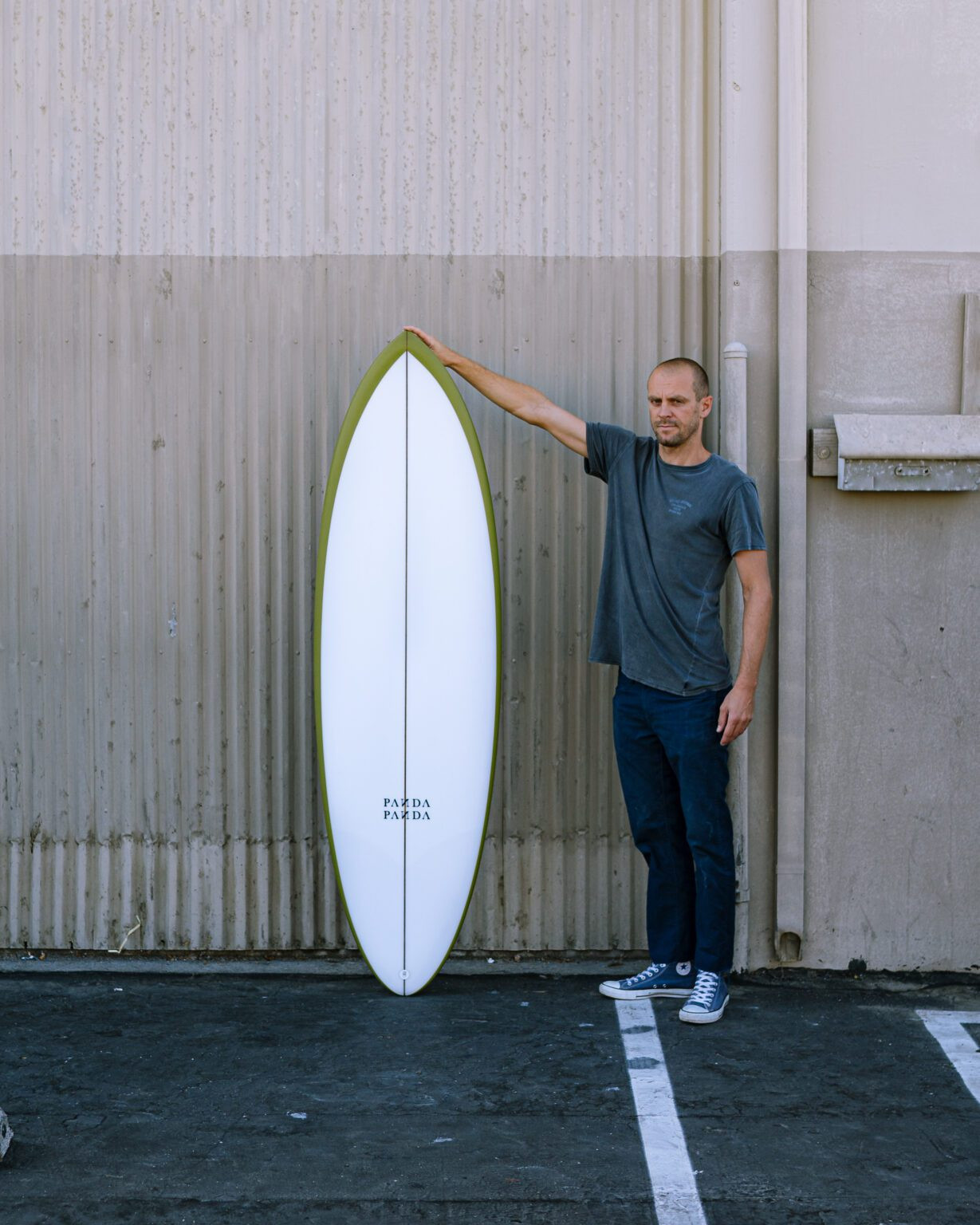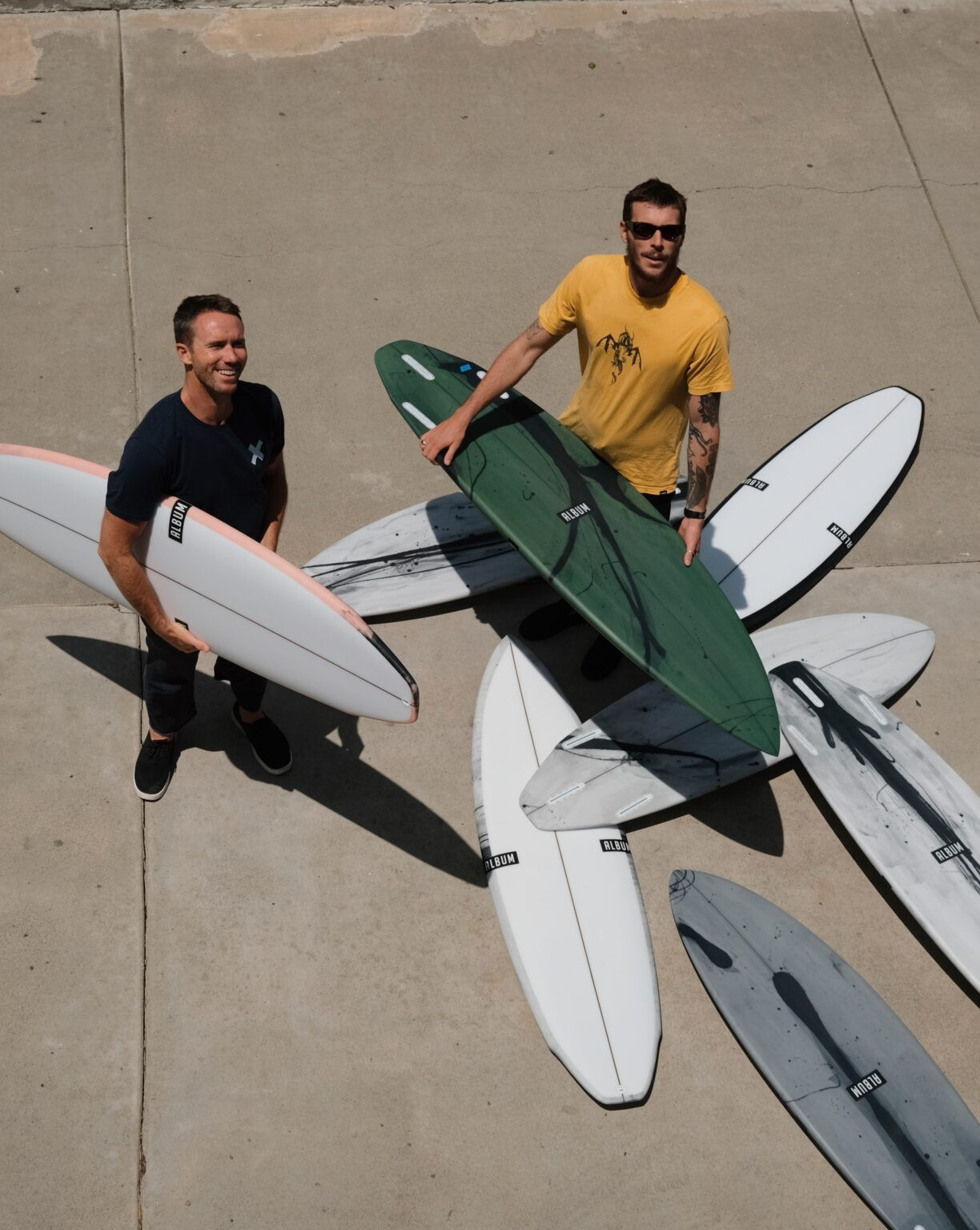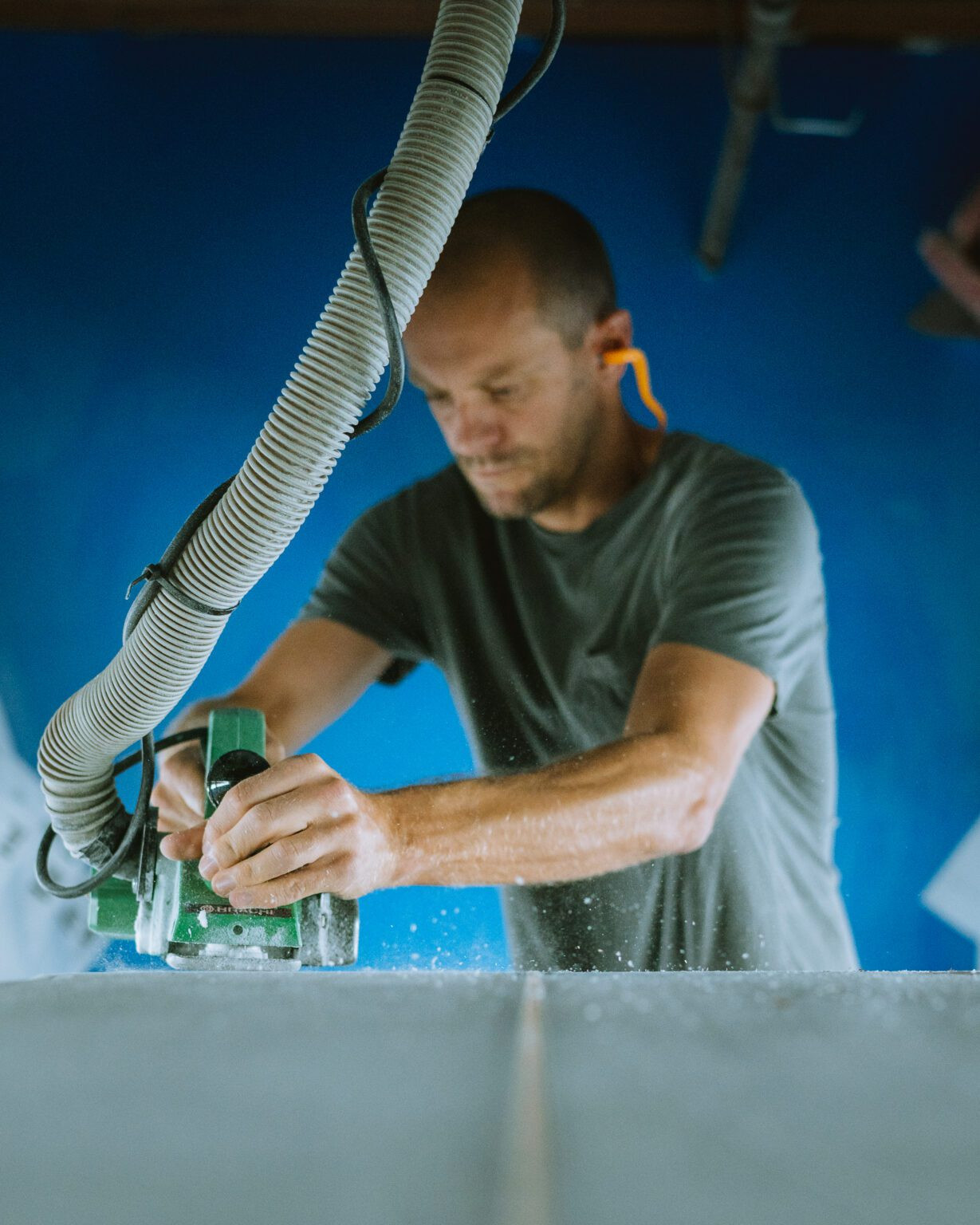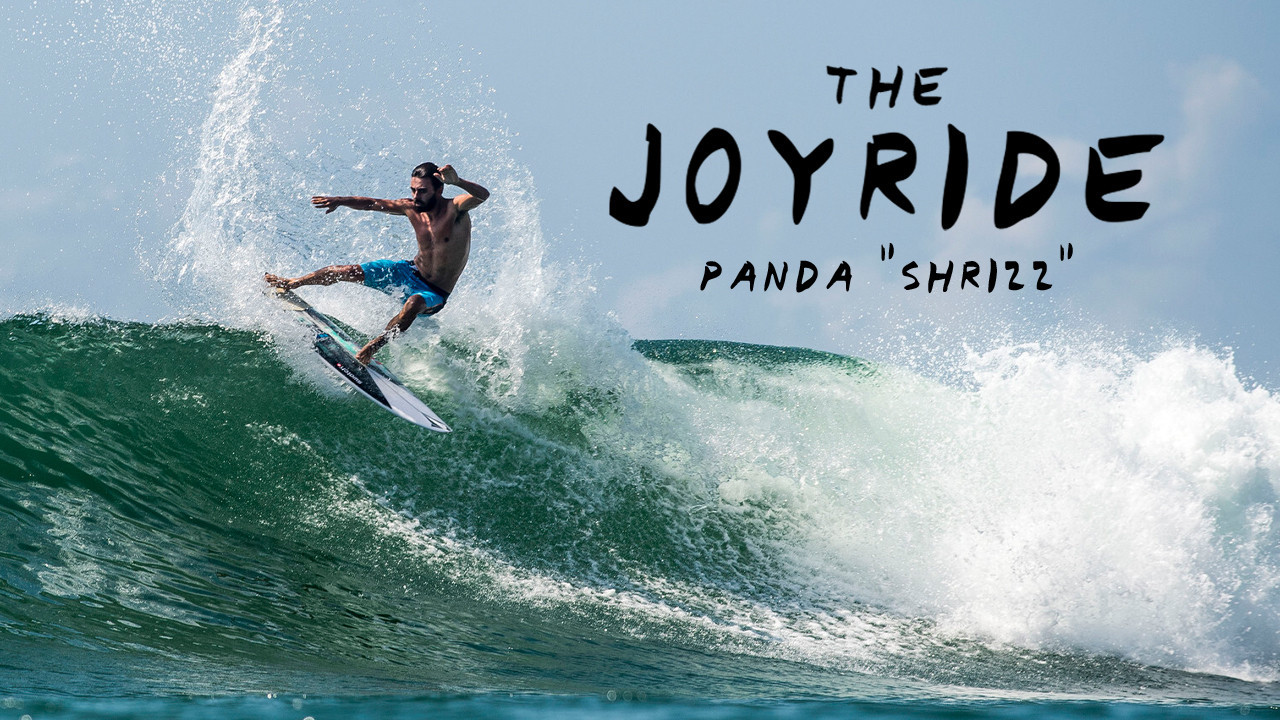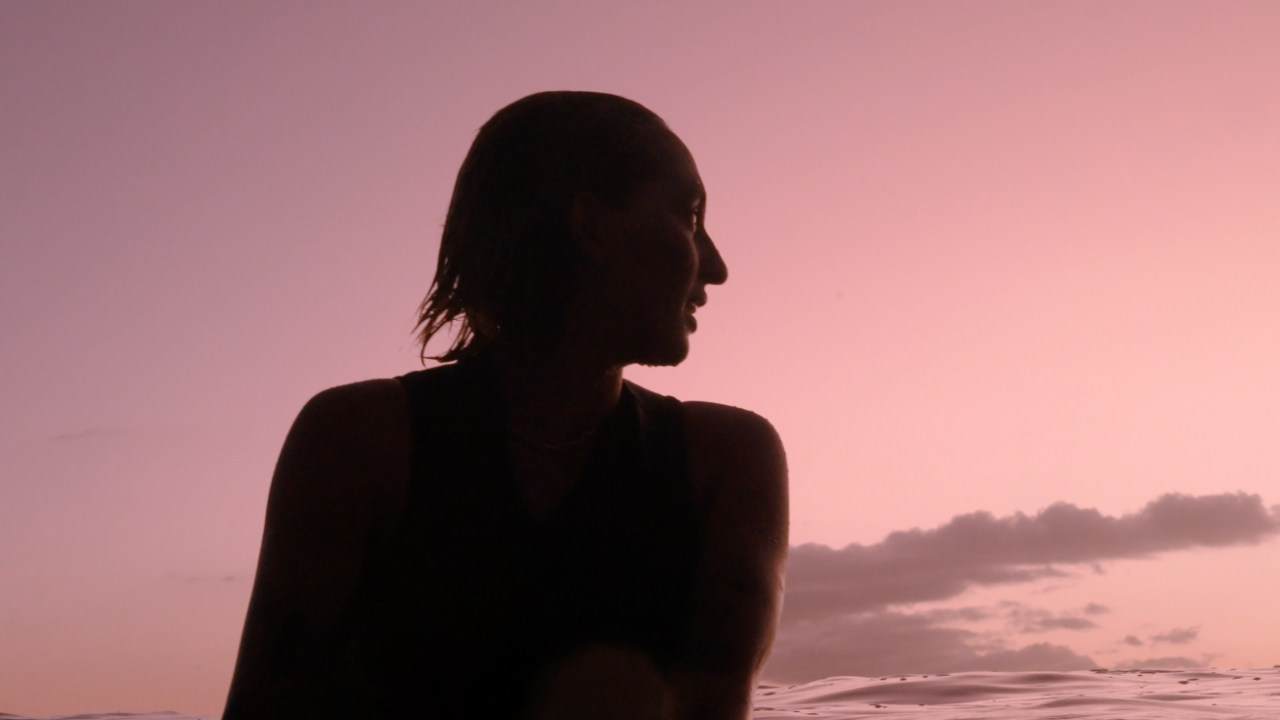

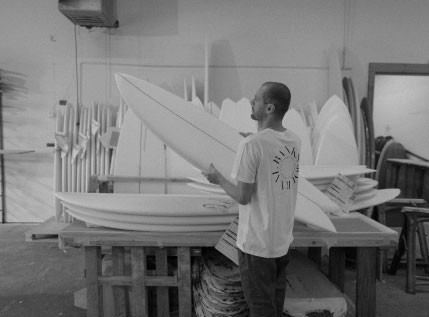
Thursday, November 02, 2023
INSIDE THE ALTERNATIVE SURFBOARD MARKETING MACHINE
WORDS BY MITCHELL SHEPHERD
READING TIME:11 MINUTES
STAB recently ran a piece in which Jon Pyzel, JS, and Johnny Cabianca gave us a peek behind the scenes of how they operate sponsorships with surfers. It was seemingly well received. Healthy web traffic, comments of support, even pleas for a second serving — this time with a main course consisting of shapers who provide planks for the non-CT crowd. Some names were suggested. An email arrived from Editor Buckley, quickly green-lighting a version 2.0. Falling very sweetly into my lap. No pitch required. Even amongst hyper-inflation, skyrocketing interest rates and frightening geopolitical conflict, things very occasionally fall into one’s lap. Lock in a couple of shapers, rinse and repeat. Matt Parker and Blake Peters were both, unsurprisingly and kindly, pleased to take part. The candid, insightful and uncensored observations from the men behind Album (Matt) and Panda (Blake) on why and how they operate sponsorships with the non-CT crowd may leave you with an alternative view of the alt board world. Keep scrolling.
Stab: Let’s start from the beginning. Why bother sponsoring surfers at all? Why not just plunge those dollars into traditional marketing? Album: I really get a lot out of sponsorships on the R&D and design side of things. The relationships I have with surfers is key to that. But it’s also gratifying. I love seeing something I’ve made being taken to its absolute potential and seeing designs being fully realised. It’s validating. Even when you put the marketing aspect of sponsorships aside, it’s still worthwhile. The boards I make are better for it. Panda: I think having good, reputable surfers on my boards in the water is the best form of marketing. That’s where other surfers see your boards at work. If you look at the top local surfers who are respected at a beach, people notice what they’re riding. That advertising always works with surfboards. Throw in the social media accounts of those surfers and you have a lot of people noticing the boards they’re riding. Tell us about your current team. Album: I have about six professional surfers on my team: Josh Kerr, Victor Bernardo, Asher Pacey, Sterling Spencer, Jack Freestone, and McKenzie Bowden. We try to focus on relationships with our surfers. As a shaper, you only have a finite amount of time available, so it’s important to think about where you spend it. I’m amazed by shapers who have big teams of surfers, particularly those with CT level surfers chasing titles. The amount of time they would have to devote to them would be incredible. Hats off to them. Panda: All my riders are freesurfers who were competitors at some point in the past. Most did a year or two of the QS but got over it. My surfers tend to have unique personalities and styles, which is what I look for. While I’m not sponsoring any competitive surfers, I do work with them. I find that working with competitive surfers doesn’t do much for my business. No one really notices the whole list of surfers who aren’t winning. Although some contest surfers are cool, I feel that many are pretty boring, which isn’t what I’m after. The contest scene is a different ballgame. You would think that some of them would look at different products to get an edge, but they mostly seem to gravitate towards the same stuff.
What are you looking for in surfers before they join your list? Album: Somebody I’d love to surf and hang with. Those things are really important. They’ve got to be a good person, have integrity, be thoughtful and open minded doing something different. Surfers willing to ride different boards and have different approaches. We don’t want our riders to be pigeon-holed in a certain style. Take Sterling Spencer — he’s this diverse character. Whereas Josh has a family and tour history. Asher is a total style master. Jack is another family man who is currently in his prime, doing some very progressive surfing. Everyone on the team brings something unique, either with personality or approach. It makes them interesting. Panda: I look for someone with good style both in and out of the water. I’m not interested in surfers who are solely shortboard riders. I like to work with people who want to try different equipment. Although most of my riders come from a shortboard background, they are open to experimenting. Also, if a surfer doesn’t have any other sponsors, they don’t tend to get great coverage. So, when a surfer has other sponsors that align with my brand, that’s helpful and it opens up other possibilities, such as collaborations. Take Shane Borland — he’s a sponsored surfer and skater. To me, that’s more attractive and entertaining than a standard comp surfer. I also look for surfers who I think will last in the industry. That’s not always easy to pick with freesurfers, but it’s what I’m after. How do you recruit surfers onto your team? Album: It’s usually pretty organic. Sometimes someone may have tried a board and loved it, and it unfolded that way. Sometimes someone will try a board that’s fun and very different to what they are used to and we go forward from there. Jack is a good example of someone in a crossroads-type moment as he considers whether to pursue the tour or not. He surfed a Twinsman, loved it, and felt that working with us was a good direction for him to take. Panda: I’ve approached people in the past, but mostly it comes from working with other guys. When I came to the US from Australia, I worked with Ford Archbold, so a lot of my sponsored surfers have been through Ford. I think I might have approached Noah Collins because I liked his style and he rode twins and was looking to go down a different path. I think when it comes to working with well-known surfers, you probably need to approach them. The guys and girls most likely to be able to help your business aren’t likely to walk into your office, especially since I’m a smaller player. Other shapers may have easier access to the bigger names.
How do you go about designing boards for new riders? Album: It’s different every time. Sometimes a surfer sees something we’re making and wants to try it, or wants to try something with a few tweaks or adjustments. And sometimes a surfer will want something very specific and they’ll provide some notes and guidance, and we’ll take it from there. All our guys have a hugely diverse quiver. I’m constantly throwing different things at them all the time, usually types of boards I think they’d enjoy. I’ve made Jack a huge range of boards. Sometimes he requests something specific, which is fine, but I’ll usually just send him a bunch of other stuff to keep him excited about what he’s riding. Plus, it’s a great way of coming up with new ideas. It’s a bit of a surprise for everyone. Panda: I usually start them on one or two shortboards as most guys want a decent short. Then I gauge where to go from there. Then they’ll want a fish or a twin, but those alt boards usually have a common style, so you don’t have to work so much on those. Surfers are more particular with shortboards as they’re more sensitive. You need to play around with them more. Would you consider working with a CT surfer if they had it bad for your boards? Album: The amount of work, focus and attention you would have to devote to them is big — you’d almost have to sacrifice most other work. Maybe that level of devotion from a CT surfer is what is required, but I’m not sure it always translates into beautiful and amazing surfing. I’d love to see the guys and girls on tour riding something different. I feel that guys like Josh are surfing better now than they ever did on tour. There’s obviously an element of freedom and reduced pressure outside of the CT, plus being removed from the box they are supposed to fit in frees up their surfing, but I think some different boards would work really well on some CT waves. Think of a CT surfer on a Twinsman asym out at J-Bay. I truly think it’d stand out and surf so different to the others. But I do see how CT competitors are a little boxed in with what they ride: the rocker and flow of a Twinsman would suit that wave better than a standard tri fin with too much curve on the rocker, but that then allows for manoeuvres. Surf fans love contests, as well as edits and clips, but those two types of surfing are very different things. Asher, for example, appeals to everybody’s taste and everyone can appreciate what he does. But in a contest, would he be scored well? Who knows? Do most surf fans get more out of his surfing or what a CT surfer is doing to collect points on tour? It’s worth considering.
Panda: If a CT surfer came to me, it’d be pretty exciting to work with them. But from a purely business standpoint, are they helping sell my boards and opening other doors? I’m not sure how many of those surfers are on tour at the moment. Someone like John John certainly would, but a lot wouldn’t. They’ll go through 100 or 200 of your boards a year, you’ll invest lots of money into them, but how does it work for you? For me, a CT surfer would have to align with my brand and I’d want them to branch out and ride some other stuff, not just shortboards. Take Mikey February, who’s probably the top rider for CI. He was on tour, now he’s not. Those guys don’t come around very often. Fanning’s another who would sell boards, but there’s not many around like him. Taj was a guy that anyone would have loved to have on their team, and I believe he was selling a lot of boards. His personality had a lot to do with it, in my opinion. How does the contractual stuff work? Album: I have contracts in place with Asher, Josh and Jack. With the others our agreements are a little more organic. Panda: I used contracts a long time ago, but I don’t think anyone really abides by them or takes much notice. They’re pointless, really. I usually work off verbal agreements. But if a surfer was on the CT and there was money involved, then for sure a contract is appropriate. I’m also mates with my guys, so it’s not so much a business deal. Have you had any expereince with surfers who are hard to work with? Album: The only time I’ve had a difficult experience is when I’ve made boards for other pros who just want to try one. So you send them off a board and all you want in return is to hear how it went, but you often don’t. I guess you feel a bit used. [laughs] Panda: They usually tend to be younger and aren’t focused on what they want to achieve. The better guys and girls are business-minded and understand the relationship from my perspective. Whereas some just don’t seem to understand that if I’m giving them free boards, then I need a return on that investment. For example, I need feedback and I need the relationship to translate into sales. Some surfers don’t understand that, and they’re the ones who usually don’t last long.
How comfortable are you with your surfers riding other shapers’ boards? Album: There’s probably something about that in our contracts, but it hasn’t really come up as an issue. I give my guys so many different boards to try, I doubt there’s even enough time to surf them all, let alone other boards. I know McKenzie has friends who shape him boards, which is fine. Panda: I try to keep my team on my boards. There are times when they go on trips and run out of boards, so someone gives them one and that’s fine. But if they ride another board and like it, I want them to tell me why. Give me the feedback. One of my guys was recently on a trip and rode another longer twin, something totally different to what I shape. He brought it in and showed me, we talked about it, then I made a similar board for him and learned a couple of things along the way. But if they were ordering other boards, I’d like to know about it. Do all of your riders get free boards? Album: Yes, all their boards are free. They get as many as they want. It comes down to being able to try lots of things, which all feeds into R&D and design. However, if there are boards that someone is no longer using, we like to sell them. There should never be boards sitting around collecting dust. If you don’t want a board, there’s probably someone else who does. Panda: It depends on the surfer. A couple of guys pay for their initial batch of boards, they’ll buy four or five, then I’ll swap them over for free. If someone is getting tons of content and doing trips, then I’ll help them out a little more by giving them what they need. If they ride a board in a clip that gets heaps of hits, and the board gets lots of orders, I’m happy to throw them boards when they want. My guys are pretty respectful, they’ll bring boards back so I can sell them, plus they aren’t going through tons of boards. The guys getting the most — say 10 or 15 a year — will rotate their boards with me. If they sell one, they’ll even send me the money. Every now and then a strong surfer will come in and pay for some boards. If they’re really good surfers and I’m stoked with them then I’ll let them pay cost.
What about payment. You throwing any cash at your top riders? Album: Yeah, we do. If a surfer has helped develop a model that is successful, and is out actively promoting that model, then I think royalties are deserved. The incentives of that arrangement work both ways. I would love a world where board manufacturers were able to completely support their riders, rather than have them rely on a bunch of other sponsorships. Panda: No. I’m not paying anyone at the moment. For me to pay someone they would have to open doors for me and take my business to another level. It’s a hard thing to pay someone to ride your boards, although I did it years ago. Their name has to be big enough to make money. Their board model is linked to their profile. Fanning and M-Feb are two guys who are probably making good money from board royalties. If you could shape a board for anyone on earth, who would it be? And which CT surfer would you shape a board for? Album: I’d say Craig Anderson. He’s unique and has a beautiful style. I know he’s open minded and there are just so many different types of that I would love to see him try, such as asyms, twins, longer twins, etc. For the CT surfer, it’d be Steph Gilmore all day long. She’s my favorite of all the competitive surfers to watch. She seems to love riding the alternative boards more than anything else, too. I think there’s the most room for innovation and design in women’s boards in both the style of boards and the dimensions they have typically ridden. Panda: I’d say Mikey February. He surfs beautifully but also rips, definitely one of the best in the world. Mikey also suits my brand and the boards I make. For the CT surfer, maybe Jack Robinson. That’s a hard one, though.
Any last words? Album: When high-level surfers are given no restrictions on what they have to ride, it’s interesting to note what they go for. I think this should be reflected in what everyday surfers choose to ride. There are obviously boards that the pros market, but when no one’s watching, what are they riding? Panda: Emailing go pro sponsorship videos doesn’t work. Don’t do that. If you want a board sponsor, have a CV and some quality video clips.
